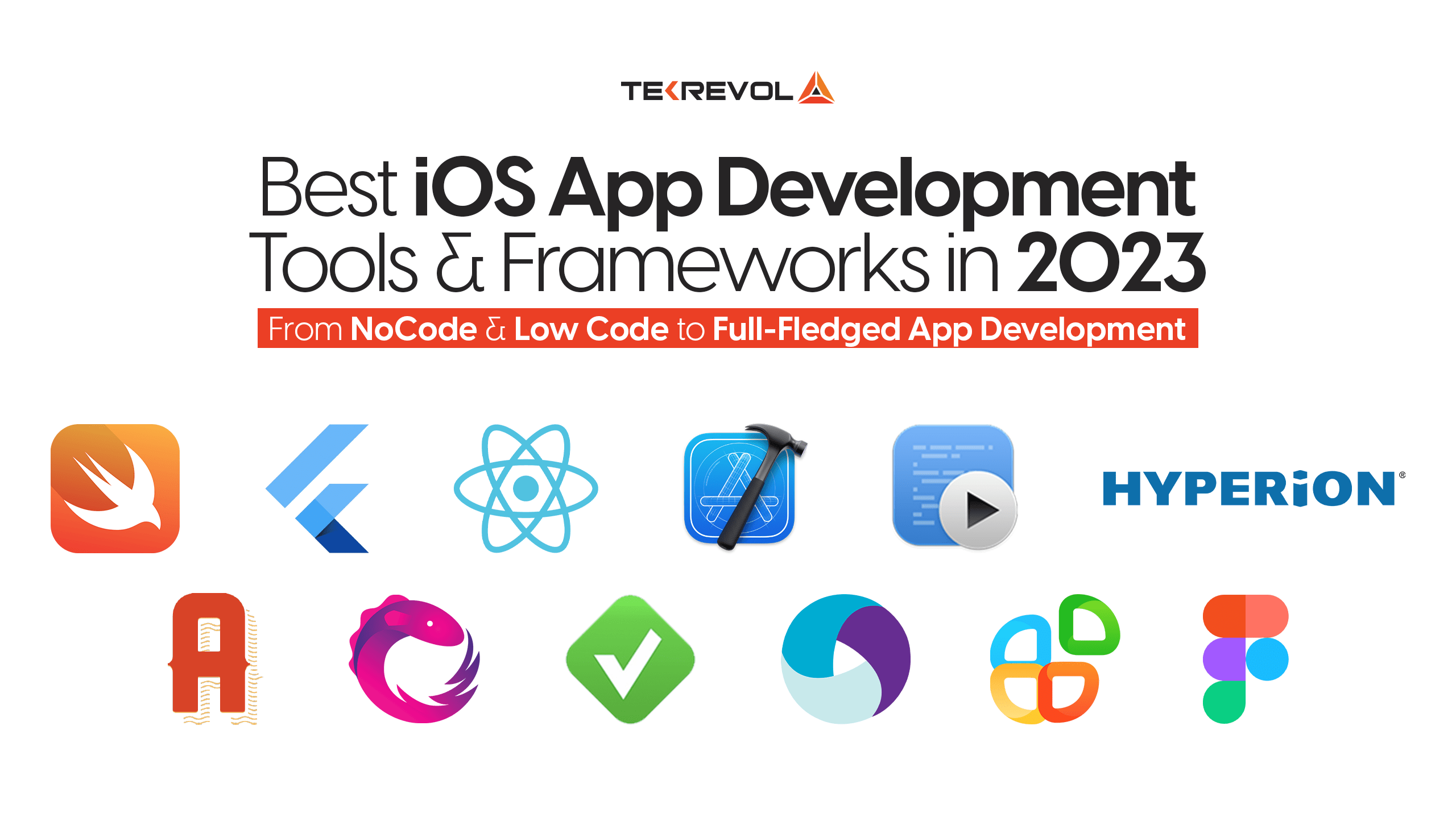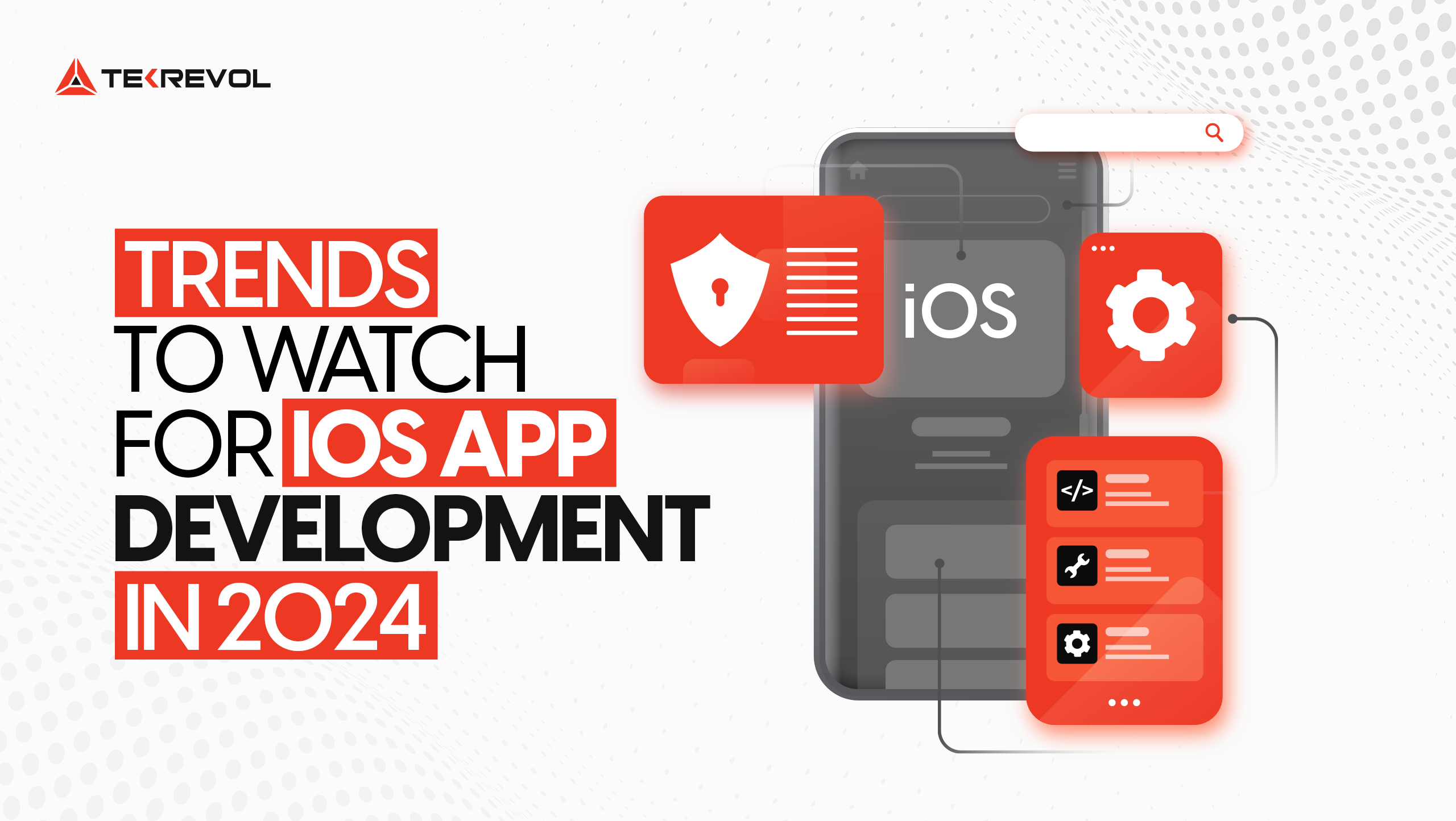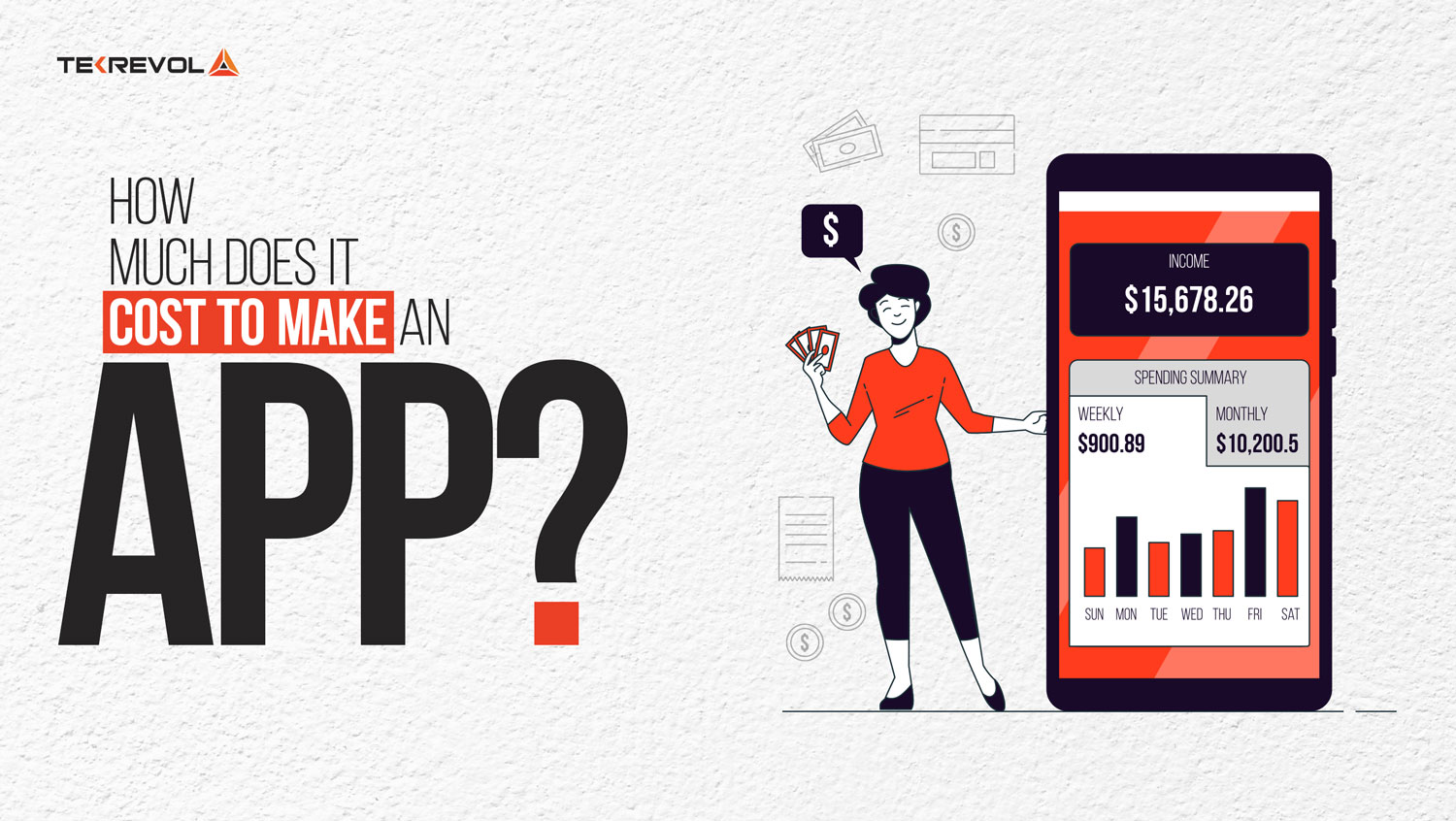Best iOS App Development Tools & Frameworks in 2024 – From No Code & Low Code to Full-Fledged App Development
- Technology
- |

The days of slaving away with low-level assembly language are long gone, and developers are now blazing new trails with cutting-edge low-code/no-code app development tools and frameworks.
It’s like going from writing with a quill pen to dictating to a super-smart AI assistant!
This transformation has made app development more accessible, faster, and more cost-effective, leading to an explosion in the number of mobile apps in the market.
A report from Statista confirms a massive hike in the number of mobile apps submitted to the application stores every month. People are becoming more inclined to starting and scaling their app businesses, and if you’re one of them, read on!
This blog lists the best programming languages, platforms, and other low-code/no-code app development tools that you will find useful for iOS app development. By the time you are done reading this, you will have a complete understanding of all the best iOS app development tools, platforms, and languages required for iOS app development.
So without further ado, let’s get started!
Best iOS App Development Tools, Frameworks, & Programming Languages
Here’s our list of the best iOS app development tools, frameworks, and programming languages that can help you kickstart your app entrepreneurial journey.
For Native App Development
Swift
Swift is a modern programming language by Apple that aims to enhance the speed, safety, and ease of coding. It boasts an intuitive syntax that’s both readable and writable, making it suitable for both novice and seasoned developers. With its robust features, such as automatic memory management and inbuilt error handling, Swift enables developers to create efficient, high-quality applications with ease. Whether you’re developing applications for iOS, macOS, or other Apple platforms, Swift is the perfect tool to streamline your coding processes and bring your innovative ideas to life.
Key Features
- Fast and efficient performance
- Safe and easy to use memory management
- Concise syntax and expressive features
- Interoperable with Objective-C and C code
- Automatic reference counting to manage memory usage
- Advanced control flow mechanisms for complex logic
- Built-in support for optionals to handle nil values
- Protocol-oriented programming for flexible, reusable code
Objective C
Objective-C is a high-level programming language that has been widely used for developing applications for Apple’s macOS and iOS operating systems. Developed in the 1980s, Objective-C is a superset of the C programming language that adds object-oriented programming capabilities and runtime reflection. Despite the growing popularity of Swift, Objective-C remains an important language for developing legacy applications and maintaining existing codebases. Its robust features and extensive library of frameworks make it an ideal tool for building high-performance, scalable applications. Whether you’re an experienced developer or just starting out, Objective-C is a powerful language to add to your toolkit.
Key Features
- Dynamic runtime and messaging system
- Extensive support for legacy systems and libraries
- Uses manual reference counting for memory management
- Provides powerful introspection and reflection capabilities
- Message forwarding for handling unimplemented methods
- Intuitive syntax for invoking methods
- Flexible runtime with runtime introspection and manipulation
- Ability to mix and match C++ and Objective-C++ code.
Swift vs Objective C: What’s Better for iOS App Development?

It’s important to choose a programming language that is easy to learn, efficient, and scalable. In this regard, Swift is a better choice than Objective-C for iOS app development.
With its concise and expressive syntax, automatic memory management, and fast performance, Swift allows for faster development and easier maintenance. Moreover, Swift is interoperable with Objective-C and C, making it easier to integrate with existing code.
Overall, Swift is a more modern and efficient language that can help entrepreneurs bring their ideas to market faster and with less effort.
For Hybrid App Development
Flutter
Flutter is a free and open-source software development framework created by Google for building native Android, iOS, Web, and desktop apps from a single codebase. It’s a complete framework that includes tools for testing, debugging, and profiling your app and support for multiple platforms and native-level performance.
Key Features:
- Mobile-first 2D rendering engine optimized for performance
- Modern react-style framework
- Rich set of widgets implementing Material Design and iOS-style
- APIs for unit and integration tests
- Interop and plugin APIs for connecting to the system and 3rd-party SDKs
- Headless test runner for running tests on Windows, Linux, and Mac
- Dart DevTools for testing, debugging and profiling your app
- Command-line tools for creating, building, testing, and compiling
- High-quality visuals and user experience
- Native-level performance
React Native
React Native is a powerful and widely used framework that offers a range of features to help developers create high-quality native mobile apps using JavaScript and React. The framework enables fast and consistent development experiences for both Android and iOS apps, with many prominent businesses, including Airbnb, Skype, and Amazon Prime, using React Native for their mobile app development.
Key Features:
- Native performance and look-and-feel
- Hot Reloading for faster development
- Cross-platform capabilities with reusable components
- Easy integration with third-party libraries and APIs
- Support for both declarative and imperative programming styles
- Automatic memory management and garbage collection
- Single codebase for multiple platforms
- Component-based GUI creation for front-end apps
- Declarative API for predictive user interfaces
- Easy installation through NPM
Flutter Vs React Native
Best Integrated Development Environment
Xcode
Xcode is a powerful and feature-rich platform for creating Swift applications for iOS devices. It is the go-to choice for new developers looking to build iOS apps for Mac, iPad, iPhone, Apple Watch, and Apple TV.
Xcode’s comprehensive development environment provides a text editor, compiler, and build system, making it the perfect tool for developers to write, compile, debug, and publish apps on the App Store.
Key features of Xcode
- iOS SDK for building, installing, and running apps on Mac-based simulator
- Built-in debugging and profiling tools for quick error resolution and optimization
- Version control and collaboration tools for cross team development
- Supports multiple programming languages, including Swift, Objective-C, C++, and more
- Offers automatic code completion and syntax highlighting
- Provides integration with popular version control systems such as Git and SVN
- Allows for easy localization of apps with built-in support for multiple languages
- Includes a simulator for testing apps on different devices and operating systems
- Offers built-in templates for common app types such as games and social media
- Provides access to Apple’s extensive library of developer resources
Code Runner
- Supports multiple programming languages, such as JavaScript, Python, and Ruby
- Built-in debugging tools make it easy to identify and fix errors
- Automatic code completion and syntax highlighting streamline the coding process
- Version control integration with Git and other systems
- Code Runner allows for easy customization of the coding environment
- support multiple file types for a wide range of coding projects
- A variety of built-in libraries and frameworks to incorporate advanced features
- Offers a clean and user-friendly interface
- A powerful console for real-time feedback and easy debugging
- Constantly updated with new features and improvements

Xcode provides a comprehensive integrated development environment with a graphical interface, debugging tools, and built-in collaboration features, while Code Runner focuses on providing a lightweight, customizable text editor with support for multiple programming languages and external tools.
Ultimately, the choice between the two depends on the specific needs and preferences of the developer.
For User Interface Design
Hyperion
Hyperion is a debugging tool designed to build user interfaces for both iOS and Android. It helps developers analyze and improve the performance of their apps, with state-of-the-art features that enable developers to view the app’s internal state and manipulate the user interface of the app.
Key Features:
- Real-time app inspection and modification
- Easy-to-use UI to view app metrics
- Layout Inspector to view UI components of the app
- Quick app restart
- Built-in logs viewer
Haiku
Haiku allows designers to create and share animated UI components for web and mobile apps. With its simple and intuitive interface, designers can easily create complex animations that can be exported and implemented into the app development process.
Key Features:
- Drag-and-drop interface for building animations
- Collaboration and sharing features
- Built-in timeline and animation controls
- Supports multiple export formats
- Compatible with various design tools such as Figma and Sketch
Figma
Figma is a feature-rich UI design tool offering various features for designing and prototyping web and mobile apps. This tool is widely used for its real-time collaboration feature, allowing designers to work together on the same design project in real-time.
Key Features:
- Web-based and cross-platform compatibility
- Real-time collaboration and commenting
- Component-based design system
- Supports plugins and integrations
- Easy-to-use prototyping and animation tools
Figma vs Haiku vs Hyperion

Figma Vs Haiku vs Hyperion: What’s the Best UI/UX Tool?
Hyperion, Haiku, and Figma, are great options for building UI for iOS apps.
Hyperion is an open-source tool that offers essential prototyping and animation capabilities but may require more advanced knowledge of Kotlin, RxJava, and Dagger 2.
Haiku is easy to learn and offers powerful animation and motion tools and full-screen design and prototyping capabilities.
Figma is also easy to learn, offering comprehensive prototyping capabilities, robust animation tools and plugins, and live collaboration and commenting features.
The best tool for building UI for iOS apps will depend on your specific needs and preferences, but all three of these tools are worth considering.
Best iOS App Development Libraries
AlamoFire
AlamoFire is a popular open-source Swift-based HTTP networking library used for building iOS, macOS, watchOS, and tvOS applications. It offers a simple and elegant way to make HTTP requests and handle responses, making it easy to work with RESTful APIs.
Key Features:
- Simple interface for making HTTP requests
- Automatic response handling and deserialization of JSON/XML data
- Built-in support for handling authentication and headers
- Advanced features like HTTP caching, multipart file uploads, and request cancellation
- Comprehensive test coverage
RxSwift
RxSwift is a popular reactive programming library for iOS app development. It is based on the ReactiveX programming paradigm and is used to simplify asynchronous programming by providing a way to handle events and data streams in a declarative and composable way.
Key Features:
- Reactive programming model for handling data streams and events
- Powerful operators for filtering, transforming, and combining data streams
- Easy-to-use API for handling user interface events and other asynchronous tasks
- Supports both hot and cold observables for sharing data streams across multiple subscribers
- Comprehensive documentation and community support
AlamoFire Vs RxSwift

AlamoFire is a library focused on networking and HTTP requests, providing a simple interface for making requests and handling responses. On the other hand, RxSwift provides a reactive programming model for managing data streams and events in a composable way, which can be more powerful but has a steeper learning curve.
The choice between the two libraries primarily depends on the expertise of the development team, and the specific requirements of the project.
If networking is a primary concern, AlamoFire should be your go-to choice. However, if the project requires more complex handling of data streams and events, RxSwift may be the better option.
For iOS App Testing
XCTest
XCTest is Apple’s native testing framework that provides a powerful and intuitive way to test iOS apps. It is integrated with Xcode, Apple’s integrated development environment, making it easy to get started with testing.
With XCTest, you can easily write unit tests, UI tests, and performance tests for your app, ensuring your iOS app performs at its best by detecting bugs and performance issues early on.
It provides a lot of flexibility for testing different aspects of your app, allowing you to write tests tailored to your specific needs.
Appium
Appium is an open-source automation tool that makes iOS app testing easy and efficient. It supports iOS app testing on real-time devices and simulators, allowing you to write tests in different programming languages, including Java, Python, and Ruby.
With Appium, you can automate interactions with your iOS app’s user interface, ensuring your app performs as expected.
Whether you’re testing a native or hybrid iOS app, Appium provides the flexibility and power you need to detect bugs and ensure your app runs smoothly.

There is no one-size-fits-all answer to which testing tool is best for iOS app development. Both Appium and XCTest have their strengths and weaknesses, and choosing the right tool ultimately boils down to your project’s specific needs.
If you are building an iOS app exclusively and want to use a more integrated testing framework, XCTest is your go-to testing tool. It is an Apple-native testing framework that is easy to use and provides a robust set of features to test iOS apps.
However, if you are developing cross-platform mobile apps and need to test on multiple platforms, Appium is a better choice. Appium supports multiple platforms and programming languages and has a powerful user interface testing API that allows you to automate interactions with the app’s user interface.
For No Code/Low Code App Development
Appy Pie
Appy Pie is a popular no-code app development platform that is easy to use and supports iOS, Android, and web platforms. It offers a range of templates and design options, but customization is limited. It also offers features like push notifications and social media integration and has a relatively low price point starting at $15/month.
Bubble
Bubble is a more comprehensive no-code app development tool with a drag-and-drop interface that supports iOS, Android, and web platforms. It provides many customization options, features, and integrations, including Salesforce and Zapier. However, its price point is relatively high, starting at $25/month.
Adalo
Adalo is a low-code app development platform that is easy to use and supports iOS and Android platforms. It offers a drag-and-drop interface and extensive customization options but has limited features and integrations. The platform’s pricing ranges from free to $50/month.
Glide
Glide is a no-code app development tool that allows users to create mobile apps using Google Sheets as their database. It offers a range of templates and customization options but has limited features and integrations. Glide is free to use, but additional features can be unlocked for $19/per month.
Thunkable
Thunkable is a no-code app development platform that is easy to use and supports iOS and Android platforms. It offers a drag-and-drop interface, extensive customization options, and a wide range of features and integrations, including Google Maps and Firebase. Thunkable is free, but additional features can be unlocked for $25/month.

No-Code vs. Full-Code App Development

No-code/low-code app development is an excellent option for creating simple apps quickly and cost-effectively without programming knowledge. However, these platforms may have limitations on app customization and scalability.
In contrast, full-code app development offers complete control over app functionality and customization but can be time-consuming, expensive, and requires a team of developers with specialized skills.
Ultimately, the decision between no-code/low-code and full-code app development boils down to the app scope, deadline, and development budget.
Why Full Code App Development Is Better Than No Code/Low Code App Development
- Complete control over app functionality
- Customization and flexibility
- Scalability
- Performance optimization
- Integration with other systems
- Greater security
- Custom UI/UX design
- No limitations on app features and functionality
- Possibility for innovation
- Long-term cost savings
Partner up with TekRevol for iOS App Development
Want to build a successful app business? Partner with TekRevol, the top iOS app development company. We deliver on time with transparent pricing and flexible plans. Our agile approach and expertise in emerging development practices mean cutting-edge apps tailored to your needs. We work closely with you to bring your vision to life and provide top-notch customer service. Trust TekRevol to turn your ideas into reality.
- Book Your Free Consultation Today
- Let’s get in touch for a free consultation and get cost estimates tailored to your app scope.
Author : Kamran
Kamran Arshad is a computer science graduate with a knack for marketing and copywriting. He helps businesses define their brand voice and convert prospects into customers by creating scroll-stopper writing pieces. His favorite writing niches include technology, entrepreneurship, marketing, and organizational leadership. He enjoys watching movies and TV shows in crime, mystery, and thriller genres and playing chess online in his spare time.
Come meet us at a location near you!
 USA
USA
39899 Balentine Drive,
Newark, CA 94560
1301 Fannin St #2440,
Houston, TX 77002
501 E Las Olas Blvd Suite
230, Fort Lauderdale, FL
44 Tehama St, CA 94105, San Francisco
400 NW 26th St, FL 33127, Miami
740 15th St NW 8th Floor, DC 20005, Washington
 CANADA
CANADA
4915 54 St 3rd Floor
Red Deer, ABT T4N 2G7
 UAE
UAE
Level 5, One JLT Tower 1 - Jumeirah Lakes Towers - Dubai, United Arab Emirates
Level 17, World Trade Center, Khalifa Bin Zayed the First Street, Abu Dhabi
Level 22 , West Tower, Bahrain Financial Harbour, Manama, Bahrain
Level 22, Tornado Tower, West Bay, Doha, Qatar
 PAKISTAN
PAKISTAN
3/25, Block 5, Gulshan-e-Iqbal,
Karachi, Sindh 75650




Let’s get in touch!
Let’s discuss your project and find out what we can do to provide value.
I am interested in discussing my ideas with you for
COPYRIGHT 2024 TEKREVOL ALL RIGHTS RESERVED.






